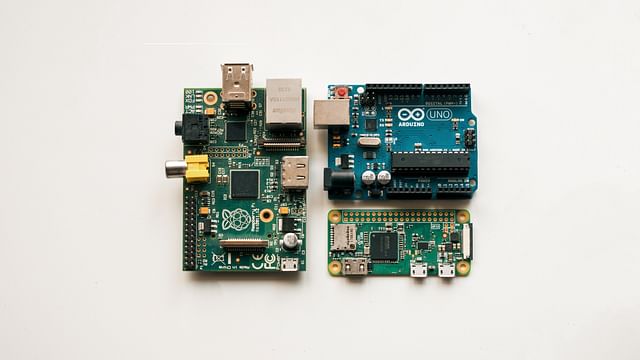
Raspberry Pi with Zigbee and Z-Wave for Home Automation
If you're interested in setting up a home automation system, you might have come across the terms "Zigbee" and "Z-Wave." Both are wireless protocols that are used to control smart home devices. And while these two protocols are similar, they have some notable differences.
In this article, we'll discuss how to use a Raspberry Pi with Zigbee and Z-Wave devices to enhance your home automation system. We'll start by briefly discussing what Zigbee and Z-Wave are. Then, we'll talk about why you should use a Raspberry Pi for your home automation system. Finally, we'll explain how to set up your Raspberry Pi with Zigbee and Z-Wave devices.
What is Zigbee?
Zigbee is a wireless protocol primarily used for home automation and smart energy applications. Zigbee devices form a mesh network, where each device relays signals to the next. This means that Zigbee devices can communicate with each other without needing a direct connection to a central hub.
Zigbee devices have low power consumption, making them an excellent choice for battery-operated devices such as motion sensors and door locks. Zigbee devices also have a wide range of compatibility with other devices, making them an excellent choice for a home automation system.
What is Z-Wave?
Z-Wave is another wireless protocol used for home automation. Like Zigbee, Z-Wave devices form a mesh network. However, Z-Wave uses a different wireless frequency than Zigbee, meaning Z-Wave devices may have a more extended range.
Z-Wave also uses a frequency that is less crowded than Zigbee, meaning there could be less interference between devices. This makes Z-Wave devices more reliable in some cases. However, Z-Wave devices tend to be more expensive than Zigbee devices.
Why use a Raspberry Pi for Home Automation?
A Raspberry Pi is a small, single-board computer that is excellent for running a home automation system. It's an affordable option that can run various software, making it a versatile choice.
Using a Raspberry Pi with your Zigbee and Z-Wave devices provides several advantages. To begin with, you can run software that can control many devices seamlessly. Additionally, you can use your Raspberry Pi to monitor the status of your devices and receive notifications when they change.
Setting up the Raspberry Pi with Zigbee and Z-Wave
To set up your Raspberry Pi with Zigbee and Z-Wave devices, you'll need a few things:
- A Raspberry Pi
- A Zigbee USB stick (such as the CC2531)
- A Z-Wave USB stick (such as the Aeotec Z-Stick)
- Smart home devices that use Zigbee or Z-Wave
Once you have these items, you'll need to follow these steps:
- Install an operating system on your Raspberry Pi. Raspberry Pi OS is a popular choice.
- Install the necessary software to connect your Zigbee and Z-Wave devices to your Raspberry Pi. zigbee2mqtt and Z-Wave to MQTT are common software options.
- Connect your Zigbee and Z-Wave USB sticks to your Raspberry Pi.
- Connect your Zigbee or Z-Wave devices to your Raspberry Pi using the software you installed.
Once everything is set up, you can use your Raspberry Pi to communicate with your Zigbee and Z-Wave devices. This means you can automate various tasks and control devices with voice commands or a smartphone app!
Conclusion
Using a Raspberry Pi with Zigbee and Z-Wave devices is an excellent way to create a home automation system that is both powerful and affordable. Zigbee and Z-Wave devices are reliable and easy to use, and combining them with a Raspberry Pi makes them even more flexible.
Hopefully, this article has given you some useful information about Zigbee, Z-Wave, and using a Raspberry Pi for home automation. With a little bit of setup, you can create a home automation system that will make your life more comfortable and more convenient!
Posted on: Sep 24, 2022 Last updated at: May 4, 2023